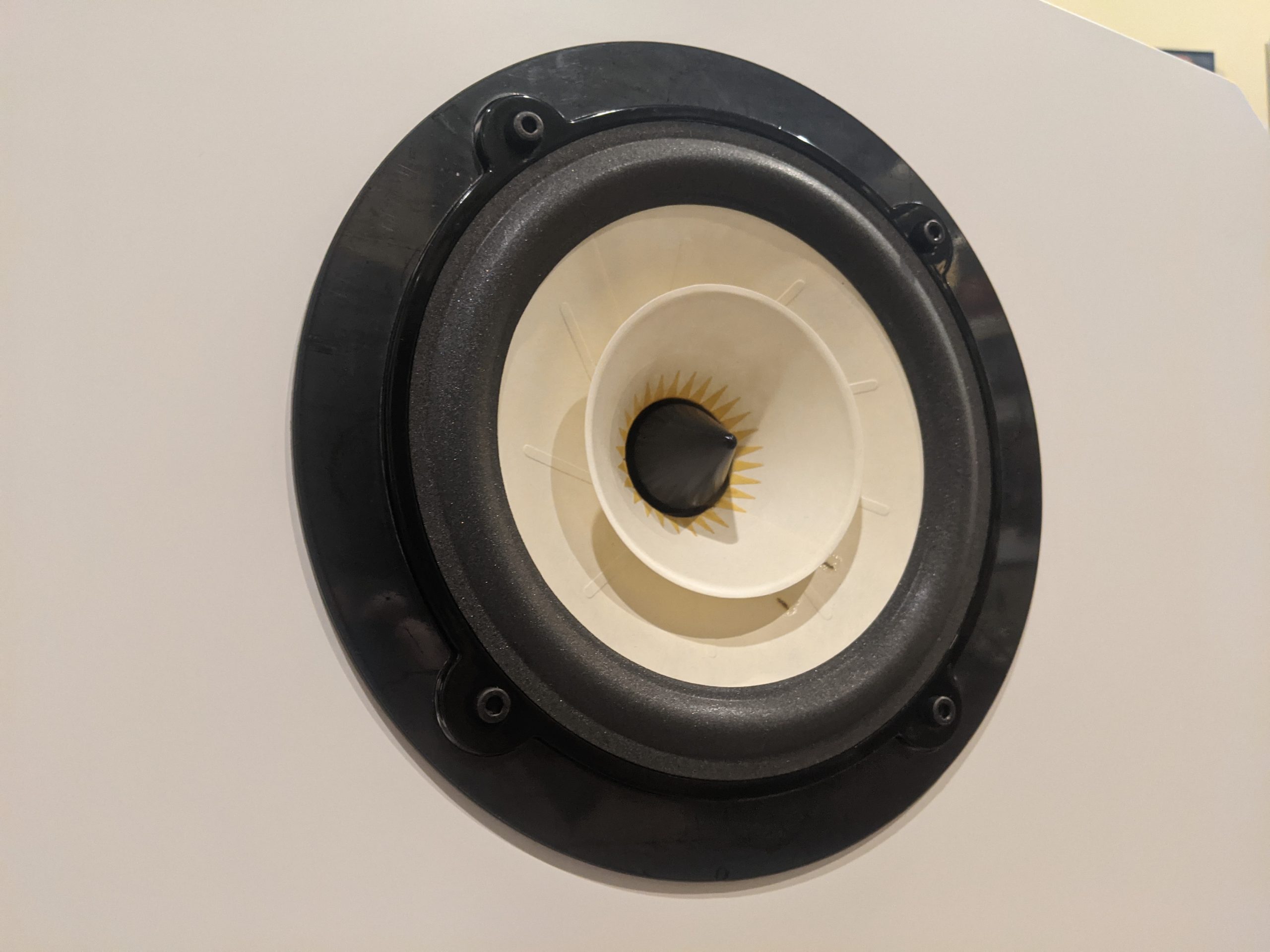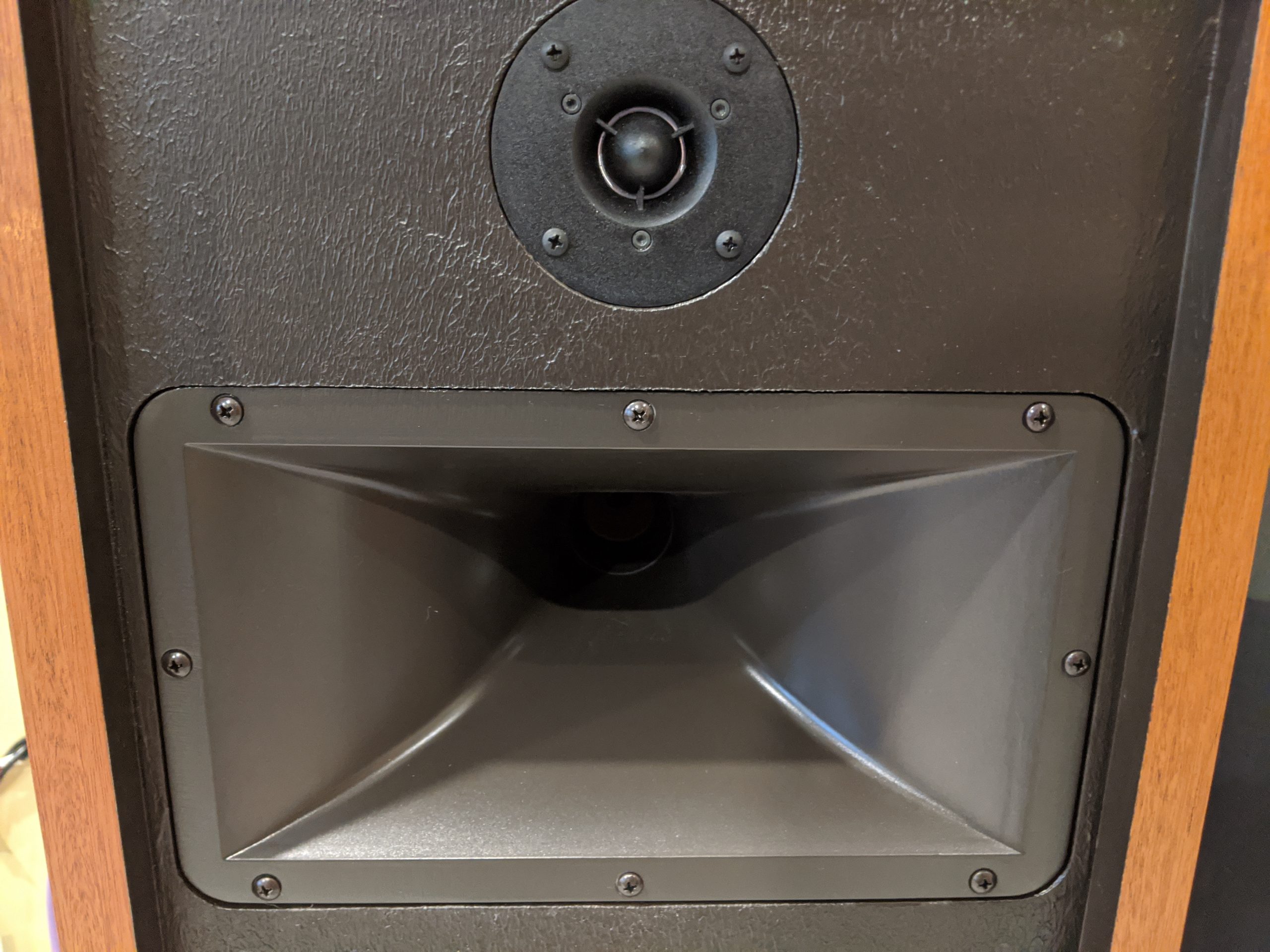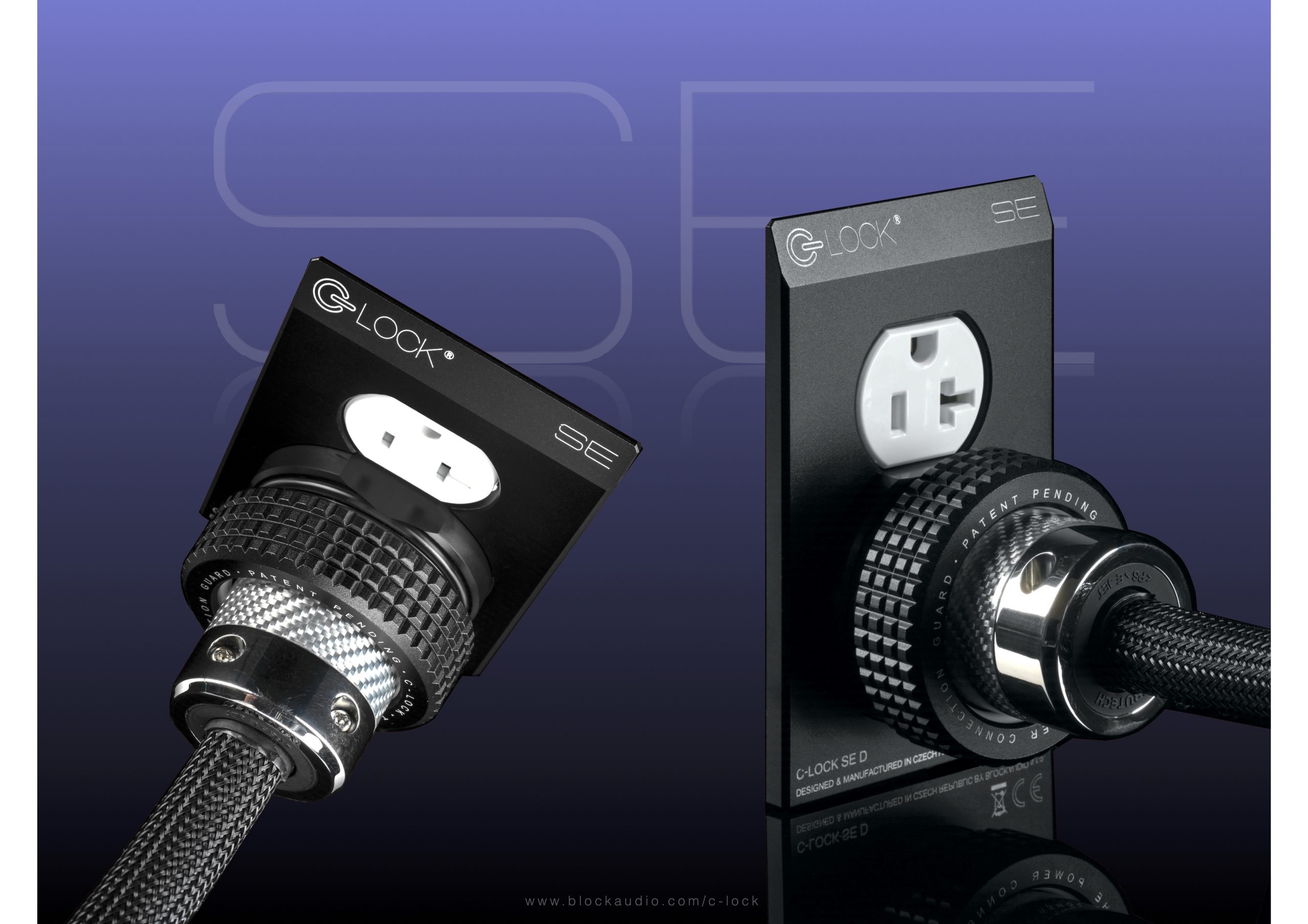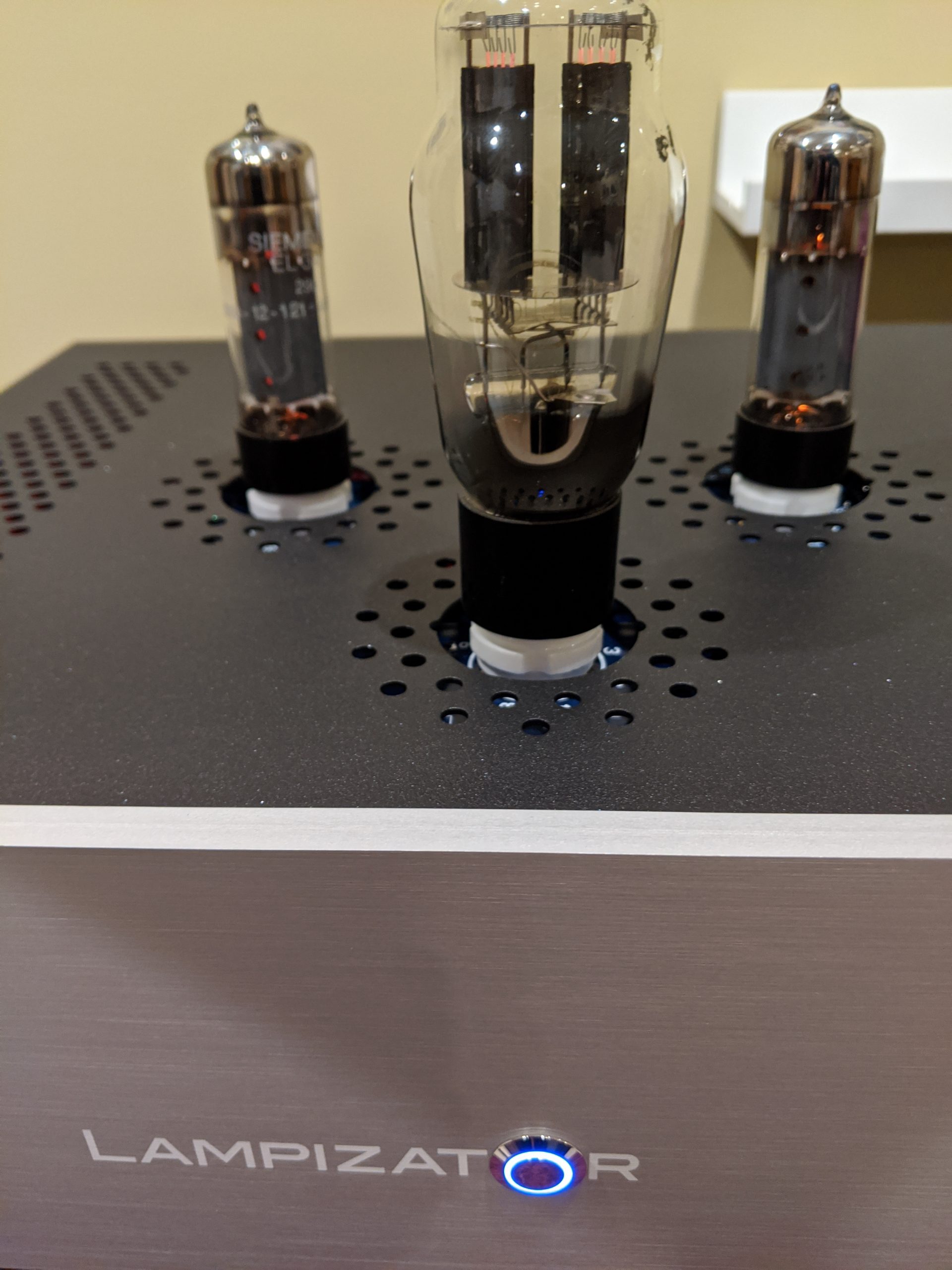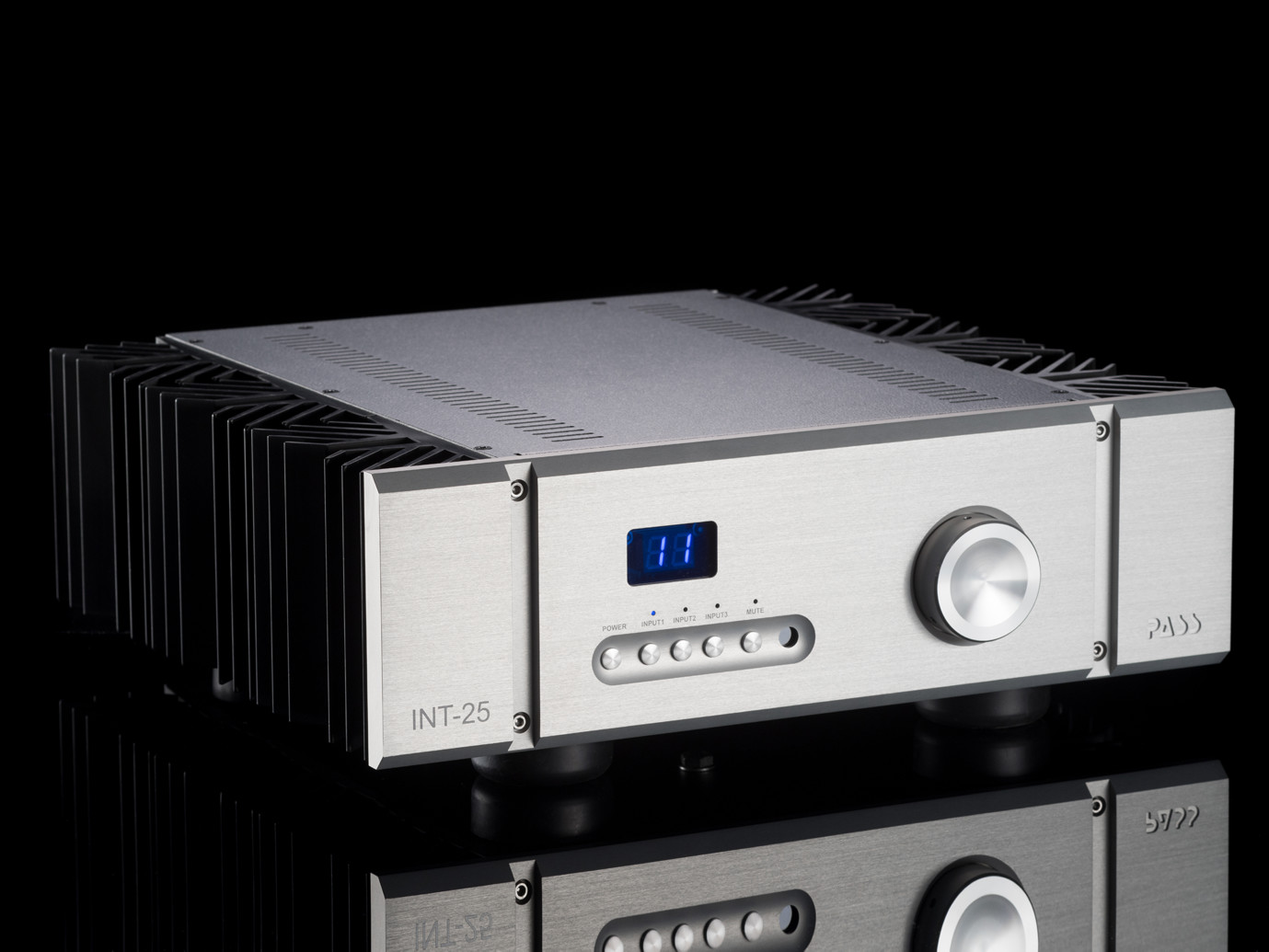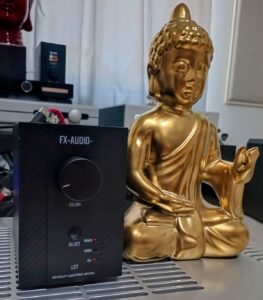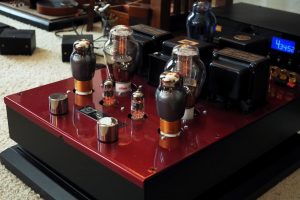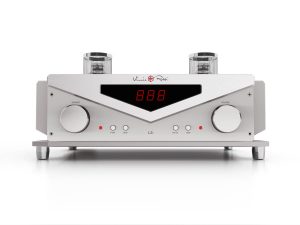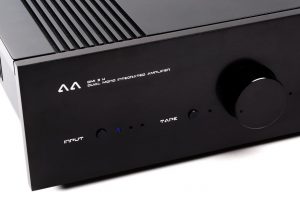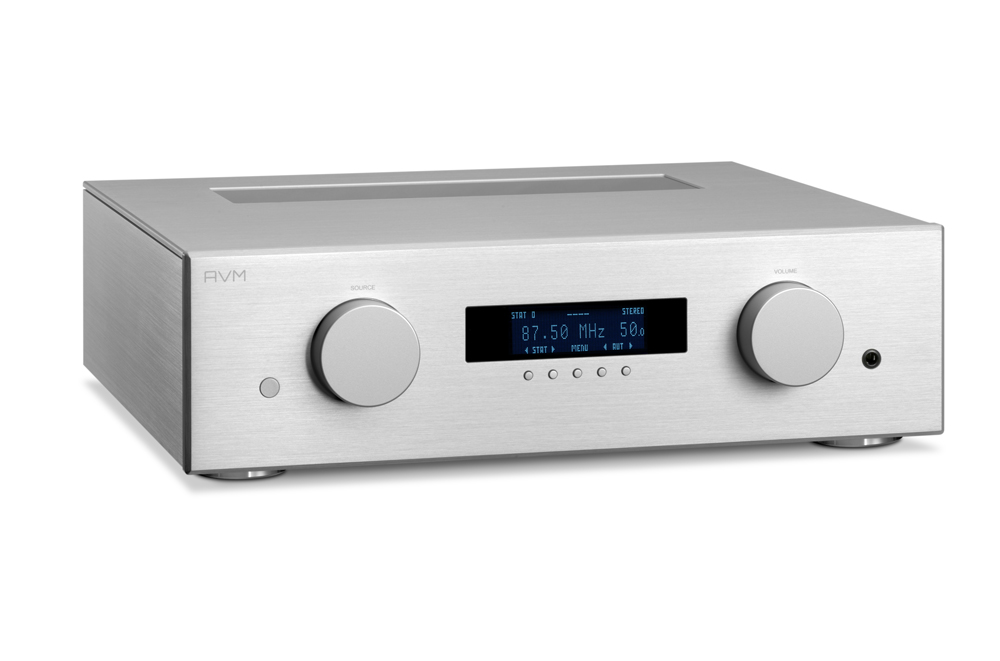
Introduction to the AVM
I love audio components that offer a lot for the money. The Evolution A5.2 Integrated Amplifier is just such piece of audio gear. Built by German audio manufacturer, AVM, the A5.2 is a part of AVM's extensive Evolution line of high fidelity components. AVM has been building HiFi gear since 1986, and according to their website they follow an engineering philosophy adherent to the K.I.S.S. principle—keeping the audio signal as unaltered as possible for the best sound.
The Evolution of the Integrated Amplifier
The A5.2 is a fully-featured one-box integrated amplifier in a medium-sized, brushed aluminum enclosure (also available in black). It is beautifully made; a model of sleek, simple, and efficient. Not just a pretty face, the A5.2 employs a tube-filtered linestage coupled to dual-mono Hypex Class D Switching amplifiers. Rated output is a healthy 185 watts at 8 ohms, and 350 watts per channel at 4 ohms. (See the end of this article for complete A5.2 specifications.)
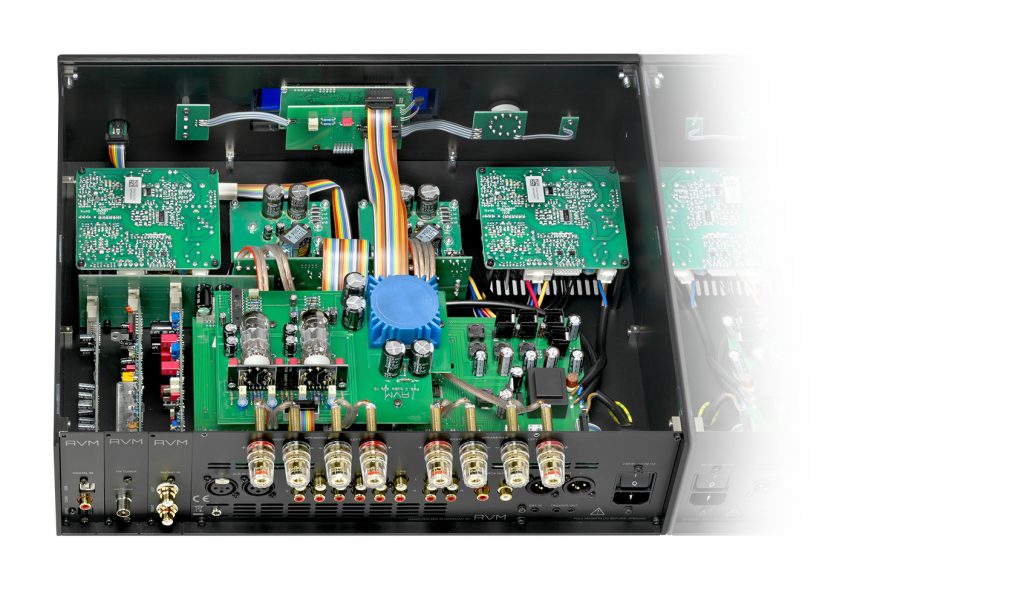
On its rear panel are multiple inputs, and outputs; plus two sets of speaker terminals in an A & B configuration. The speaker connections can be used to drive two pairs of speakers simultaneously. There is an RCA processor output that can also be used to connect a subwoofer. A front mounted ¼" headphone jack can be configured as an auxiliary input. The simple and easy to handle RC3 remote control wand is included, and controls on/off, source selection, volume, and station selection for the optional tuner module. (The more fully-featured RC8 remote is available as an option.) Also included is a basic power cord, manual, and white gloves for handling. The rear of the unit is a very busy place, with all the various connections in a small amount of real estate. While well laid out, both sets of 5-way speaker binding posts are located at the top of the unit. This location required a little extra effort to connect my somewhat large Stealth MLT spade-terminated speaker cables to keep them from interfering with the power cord inlet and input interconnects.
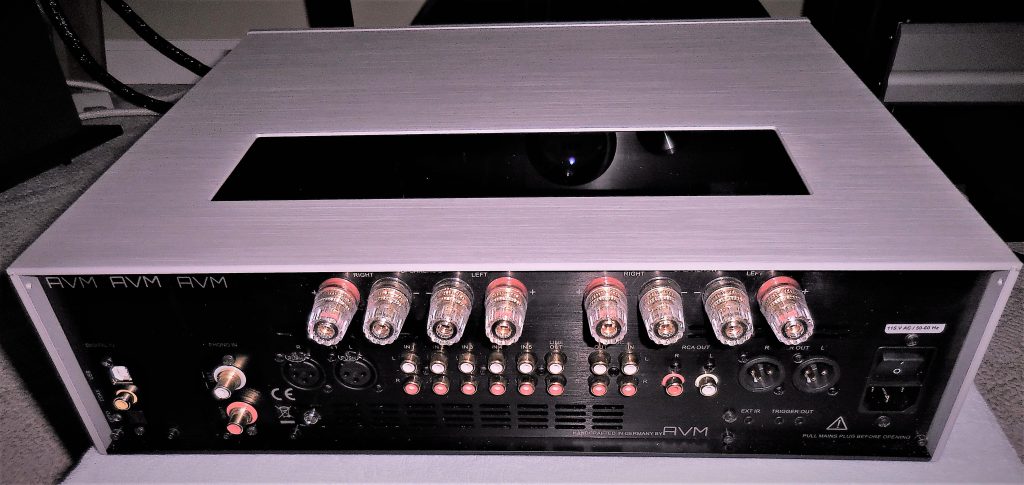
Photo by G.L. Beard
Once the rear mounted main power switch is flipped on, the A5.2 is placed in standby mode. The front of the unit is populated by an on button, source and volume knobs, LED display, five multi-function buttons, and the headphone jack. When the on button is pressed (either on the unit front panel, or the remote), a cool little control routine runs a startup program that allows the tubes to warm up prior to playing music. The AVM's software system controls a plethora of options: balance, treble and bass tone controls, sensitivity settings, and extra niceties like the ability to add custom names for inputs. The sensitivity setting is a neat feature, allowing the user to vary the gain of each input in a range from -9.5dB to +10.0dB.
From the AVM website: "If you wish to correct the frequency response at low listening levels or to have more or less treble or bass, you can activate the sound processor and set the frequency response. For linear reproduction the whole circuitry is removed out of the signal path by relays and has absolutely no influence. The preamp section has one balanced XLR input and five RCA-Cinch inputs. Additionally there are three slots for plug in cards: one phono card, one tuner card, and a digital card with three digital inputs. One fixed level output for recording and a processor in/out for connection of equalizers are provided. The two preamplifier outputs (RCA-Cinch and XLR) are driven by powerful output stages and can easily handle longer cables with high capacitance."
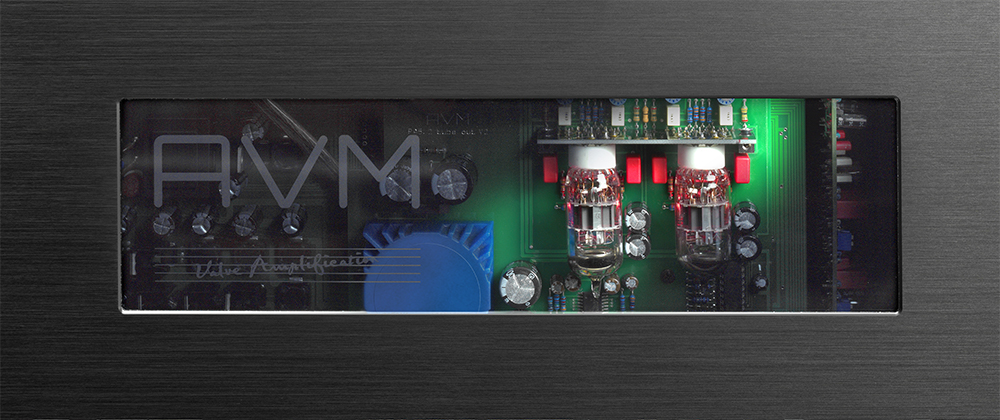
The A5.2 is fully balanced, utilizing two proprietary dual-triode Evolution 83T vacuum tubes to filter the signal prior to being routed through the linestage. There is one power supply serving the tubes, and two Hypex SMPS400A400 power supplies powering the dual Hypex UcD 400 amplifier modules. One of the most important jobs of a linestage is controlling volume. The A5.2's volume control works extremely well, with ½ dB steps allowing for exact volume adjustments. It is the first stepped controller I've ever used that I never wished for additional steps.
From the AVM Website: "The volume control is done by highly precise integrated circuits. They allow setting in 0.5 dB steps and their channel balance is better than 0.05 dB. All this provides an absolutely precise, musical sound reproduction from lowest to highest listening levels…"
Sound Generalizations
Whether true or not, vacuum tubes have always been associated with superior tone and midrange warmth in audio components. In the case of the A5.2, I note a very nice mid-range with only a slight amount of warmth. Whether this minor note of sweetness is from its two 83T signal triodes is not certain. And while tonal performance is very good, my exploration revealed the strengths of the A5.2 to be its high level of dynamic contrast, finger-snapping rhythmic drive, distinct separation of musical signals, and highly developed sound-stage.
Although recording dependent—and anything but absolute—the sonic perspective strikes me as mostly mid to back hall. The musical view is sweepingly panoramic and three-dimensional, and there seems to be musical information coming from everywhere. The A5.2 is also about balance. No part of the sonic spectrum seems to stand apart from the other, which makes it an easy listen, and a wonderful music-maker. The amp is silent at idle, and this quiet nature helps the A5.2's low level performance. Listening at lower volume levels is unexpectedly excellent; with music maintaining its dynamic intensity and great staging. This integrated possesses a very high degree of clarity, which allows every musical nuance to emerge from its Class D blackness.
It's very weird, but every so often I run into a component that has qualities I am simply unable to put the old fingerprint on. The A5.2 is just such a audio changeling. When the amp first arrived, it could be somewhat muddy, and recessed in the midrange; especially at low volume levels. And though I wasn't completely won over by the sound of the AVM A5.2 in the beginning, the more I listened, the more I liked it. There is a rightness to the sound of this amp that is hard to describe. I do believe a certain amount of break-in (whether electronic or grey-matter) accounted for my ever increasing level of enjoyment. So how do I feel about it now, after several months of listening? K.I.S.S.: it is the most supremely musical Class D based component I've heard in my home. Hot damn.
Decisions... Decisions...
I think I've conveyed that I really like the sound of the A5.2. What I may not have made as apparent, is its jack-of-all-audio standing. The AVM is not unique in this regard, the world of Hi-Fi has an increasing number of choices that provide connections of all types in one package—even modular ones. The AVM A5.2 provides its choices with seamless precision.
For the very reasonable price of $699 each, three optional sources—tuner, phono, and DAC—are available as modular circuit-board cards that plug in to the rear of the unit. These modules can be added or removed by the end-user in minutes. I didn't have to make a decision, the review unit was furnished with two of the options; the phono preamplifier, and the192kHz/24-bit upsampling digital to analog converter. While not extracting quite the same level of performance as the reference separates in my system, the phono and DAC are very good performers, and when outfitted with these two overachieving options, the A5.2 enters solid value territory, even while retailing at $6795 USD for the base model.
The Optional DAC Module
As we all certainly know by now, the art and science of designing digital to analog converters has come a long way in the past decade. If you do not need a network connection, or the ability to play DSD, then the $699 adder for the AVM module is a solid value add. Based on a Wolfson WM8741 digital to analog converter chip, the AVM module upsamples to 192kHz/24-bits on all inputs. The DAC decodes up to 192kHz/24-bit on both its digital S/PDIF coax, and TOSLink optical connections. The USB input decodes up to 192kHz/24-bit natively via Apple MAC. Microsoft Windows 10 works up to 48kHz/16-bit without a special driver. An aftermarket driver may be available to allow the use of higher sample rates with Win10. I was unable to utilize files higher than 48kHz using my Win10 based computer, so I'd recommend checking with AVM or your local dealer regarding this option.
I've experienced several DACs and CD players that have used Wolfson chips, and all of them have been enjoyably musical. The AVM is no exception. Using the COAX output of my Sony DSP-7700 DVD player as a transport to feed the AVM DAC, I actually listened to CDs for a change! It was quite a nice sound, lovely even. I fed the USB input from my Lenovo Yoga laptop, using Roon to listen to my extensive collection of flac files. The sound was detailed, full, and melodic. The DAC has a nice, relaxed quality that I always found served the music in a positive way. I'll admit, digital playback took a leap forward with my PS Audio DirectStream Junior via the A5.2's XLR inputs, but the DSJ costs more than half as much as the the AVM integrated by itself, so it better sound better. By that comparison standard, the AVM DAC module is very good indeed.
The Optional Phono Stage Module
The phono stage module has single-ended L/R RCA inputs, and is fully adjustable between moving magnet and moving coil by setting switches on the plug-in module card. The phono card came set for MM, so I had to remove it, and reset some of the dip switches. It is a simple and straightforward process. It took me longer to figure out the correct switch settings than it did to remove and reinstall the card. Once I set the voltage output to match my Lyra Delos, and set load resistance to the 75 - 150 Ohm setting, the AVM add-on phono stage sounded great. In general, its sound echoes that of the linestage/amp sections. It is exceptionally quiet, even when turned up. There is excellent separation, very nice staging, and wonderful pacing. The sense of dimension is excellent: There is a feeling of the recording space, and musical moments suspended in air. Overall, I'd point to excellent detail retrieval, solid imaging, and stage width to be the strengths of the A5.2 phono module. It is a bargain at the price.
Opinion In Use
I played everything. Vinyl. CDs. Flac files. DSD... Rock, jazz, classical, country, bluegrass, even some Michael Jackson... Acoustic. Electronica. Live AC/DC at a blow my ears out volume level.
It all sounded great.
The big power of the A5.2 drove my Von Schweikert VR 35 loudspeakers without even breathing hard. The sound always crisp, and clear. It hits hard with punch, yet there is a smooth and controlled coherence to the sound. It is a highly detailed sonic picture, with very good frequency extension. The stage as wide as my room allows, with a nice bit of bloom toward the listening seat. In comparison to the more dense, meaty sound of my reference Pass Labs XA30.8; the A5.2 is light on its audio-feet; with a lightning fast, and airy sound.
The A5.2 is also a revealer of recording truth: good or bad, the AVM always told me where a recording stood. Poor recordings, especially at louder volume levels, show themselves clearly, but in my experience, this truthful reproduction never strayed to completely unlistenable. Rather, it served to remind me that a vintage vinyl copy of Jefferson Airplane Volunteers does not sound like a hi-rez DVD of Steely Dan's Everything Must Go.
During my reviewing time with the AVM, a freshly built pair of Volti Rival horn speakers came for a visit. The A5.2's high wattage driving the efficient 6 ohm Rivals turned out to be a synergistic combo; the fine detail and dynamic swing of the A5.2 making a fantastic partner for the high efficiency dynamic prowess, and high resolution of the Volti horns. A total absence of noise between each musical note allowed an immense sound to materialize and fill the room. If however, I was not careful with the volume control, it was easy to drive them a bit too hard; the upper octaves becoming somewhat difficult for these old ears to listen to when really pushed. I certainly had no business listening this loudly (but mom, I really wanted to!) My bad...Sorry ears. Rock on! Although I rarely used the tone controls, and preferred the "bypass" setting, this was a perfect opportunity to tweak treble response to eliminate the hot top and keep the volume up. It worked too. A great pairing, the A5.2 and Rival: I was then, and remain today, shocked at how good they sounded together...
More Opinionated Notes
I've never been as smitten with any Class D based amplifier, as I am with the AVM A5.2. Perhaps that is because its strength of balance is not what I am typically drawn to in a switching amplifier. Sure, it is clear as a bell, with slam-fist bass and total silence in operation. Treble, while not showy, is very good, and transparency to the source is excellent. The sterility that I have noted at times in other PWM amps is simply non-existent. This amp is for music-lovers who don't really care about high damping factor, and low distortion specs, but still want the cool running, high-power efficiency of a switching amp. During its entire time in the Tune Saloon, I never found fault with the AVM's ability to convey the musical message.
The Hypex amp section is excellent, but the beating heart of the AVM is its linestage. Wanting to get a sense of just how much of the A5.2's sound was due to the linestage section, I connected both XLR and RCA preamp outputs to feed a number of high quality Class A solid-state amplifiers with which I am very familiar (Check my equipment list for more information). They all performed splendidly with the AVM and the sources feeding them. Without exception, sonics were solid in every audiophile sense of the word.
The tubed linestage is anything but rosy or excessively warm. Rather it is as neutral as I ever remember hearing from a tube-based component, save perhaps, my old First Sound Presence Deluxe Mk II. Presentation with the Class A amps was essentially the same as with the Class D amp: a high level of resolution, extremely detailed, a little bit of bloom to fill the room, very good depth, and a solid, yet perhaps slightly smaller stage. There is simply no noise whatsoever from the tube stage, allowing musical details to emerge quickly, and dissipate as a trail into the darkness. Bass is very tight and deep, with zero detectable overhang. In sum, the A5.2 does a fine job driving other amps, showing off an ever-changing tapestry of music. Solid work AVM.
Minor Nit and Positive Picks
In addition to my nit-picking over the location of the speaker terminals, I wish the display digits were larger. My old eyes can't read the volume level from the seated position. My positive pick was the headphone amp. I do not listen to headphones often, but the output of the A5.2s sounded really wonderful.
Final Thoughts
In my opinion, the AVM Evolution A5.2 integrated amplifier is a great example of engineering excellence. I never had one operational hiccup the entire time I had the unit. It was a pleasure to use, and a superbly well-rounded performer. I can't find fault with its music making, and although I've never been so blindly in love with the sonics of Class D based amplifiers to give up my Class A, the A5.2 blurs the lines enough to make me pause. If listening to music over playing with gear is your primary goal, and you desire a green and simple approach to do so, then this integrated amplifier should be on your short list. It has amazing staging, immense power, and a rhythmic sensibility that will have you shaking your booty within minutes of sitting down to listen. That it offers optional source add-on's for a bargain price is simply the icing on the audio-cake.
AVM Evolution A5.2 Integrated Amplifier
Retail $6795 USD
Plug-in DAC Module
Retail $699 USD
Plug-in Phono Module
Retail $699 USD
AVM Audio Video Manufaktur GmbH
Peder Bäckman
Sales Manager for the Americas
+49 (0) 7246 30991-20
Technical highlights EVOLUTION A5.2
- Highly efficient output stages with 350Watt/channel, speaker A+B
- Double mono power supply
- Stand-by power consumption < 1W
- Line inputs (one balanced XLR), 1 processor in/out, 2 preamp outputs (RCA-Cinch, XLR)
- Phones jack alternatively useable as front input
- 3 slots for phono module (MM/MC), FM-RDS tuner module, USB DAC module with 192kHz/24-bit upsampling (USB, S/PDIF coax and TOS-link), USB works PC and MAC without driver installation
- Parametric loudness, bass and treble controls (can be bypassed)
- Large bright blue graphical display, dimmable
- Full metal aluminum remote control included
- Remote control via RS232. Connector for external infrared receiver
- Multiple functions accessible via menu: Input sensitivity, individual input names & many more
- Case made of solid aluminum anodized in silver or black, chrome front available (option)
- Comfortable menu functions allow an individual configuration of the A5.2 according to your personal liking (input names, sensitivity) etc.). The sophisticated handling concept makes it easy to use. Two pairs of speakers may be connected individually.
Technical Data EVOLUTION A5.2 (Product information courtesy of AVM)
Amplifier
- Input impedance (25W/4 Ohm) 20mV –350mV (adjustable)
- Input impedance line 6,8 kOhm
- SNR line, MM, MC (Phono optional) 101dB (A), 85dB(A), 75dB(A)
- Frequency range line / Phono < 5Hz - > 50kHz, 30Hz - > 20kHz
- Intermodulation (25 W/4Ohm) < 0,1%
- Damping factor >200
- Rated Power 2 x 350 Watt (4 Ohm) / 2 x 200 Watt (8 Ohm)
FM Tuner Module (option)
- Frequency range 87,5MHz – 108,0MHz
- Step 50kHz
- Antenna impedance 50Ohms
- Sensitivity mono / stereo 1,5µV / 50µV
- S/N mono / stereo 76dB (A) / 70dB (A)
- THD mono / stereo 0,1% / 0,3%
USB DAC Module (option)
- Sampling frequency upsampling to 192kHz / 24-bits
- Frequency response <5Hz - > 50kHz
- (depending on input sampling rate)
- Deemphasis yes, auto
- Input data rate optical / coax S/PDIF, 33kHz - 96kHz / 192kHz / 16 - 24-bits
- USB input 48kHz / 16-bits, no special drivers required
- S/N ratio 120dB (A)
Phono Module (Option)
- Input sensitivity 50µV – 10mV (adjustable)
- Input impedance MM 47 kOhm // 100 - 450 pF (adjustable)
- Input impedance MC 75 Ohm - 1 kOhm (adjustable)
- SNR MM (5mV / 1kHz) 83dB (A)
- SNR MC (0,5mV / 1 kHz) 79dB (A)
- Frequency range < 5Hz - > 50kHz
- RIAA accord. RIAA +/- 0,3dB
General
- Power Supply 115/60Hz, 230V/50Hz
- Power consumption (max.) 900 W Standby <1 W
- Dimensions (W x H x D) 430 x 130 x 325 mm
- Weight 12 kg




